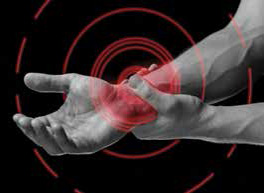
You walk out of your house, trip on the sidewalk and attempt to break your fall with an outstretched arm. Immediately afterward, you notice pain, swelling and an inability to move your wrist. You have likely just sustained a broken wrist (or Colles’ fracture), one of the most common types of broken bones.
Obviously, this is not an accomplishment worth celebrating. Colles’ fractures, named for the Irish surgeon who first described them in 1814, involve a break in the large bone of your forearm, close to the end where the bone connects with the wrist. Usually caused by a fall, Colles’ fractures are also common in sports that require a great deal of forward momentum, such as skiing, skating and biking.They also occur in people with osteoporosis (thinning of the bones). Poor muscle strength, low muscle mass and a deficiency of calcium or vitamin D put you at greater risk for a Colles’ fracture.
There are actually four different types of Colles’ fractures:
- In an extra-articular fracture, the break doesn’t extend into the wrist joint.
- In an intra-articular fracture, the break extends into the wrist joint.
- Inan open fracture,the bone pierces the skin.
- In a comminuted fracture, the bone splinters into more than two pieces.
The type of Colles’ fracture you sustain determines the type of treatment you get for your wrist. Complicated breaks may need surgery, while simpler breaks can be treated with a splint or cast, elevation, ice and rest.
A wrist fracture can take from several months to more than a year to fully heal, but a good physical therapy program involving stretching and strengthening exercises can usually help reduce pain and stiffness and increase range of motion in your fingers, wrist and elbow. Weight-bearing exercises, such as jogging, can strengthen the bones in the lower half of your body, while strength-training routines, such as weight-lifting, can do the same for your upper body. Both will go a long way toward preventing falls that might result in a Colles’ fracture.
With pain-free exercise as part of a rehabilitation program, you can have your wrist back in action, more flexible and stronger than before.
